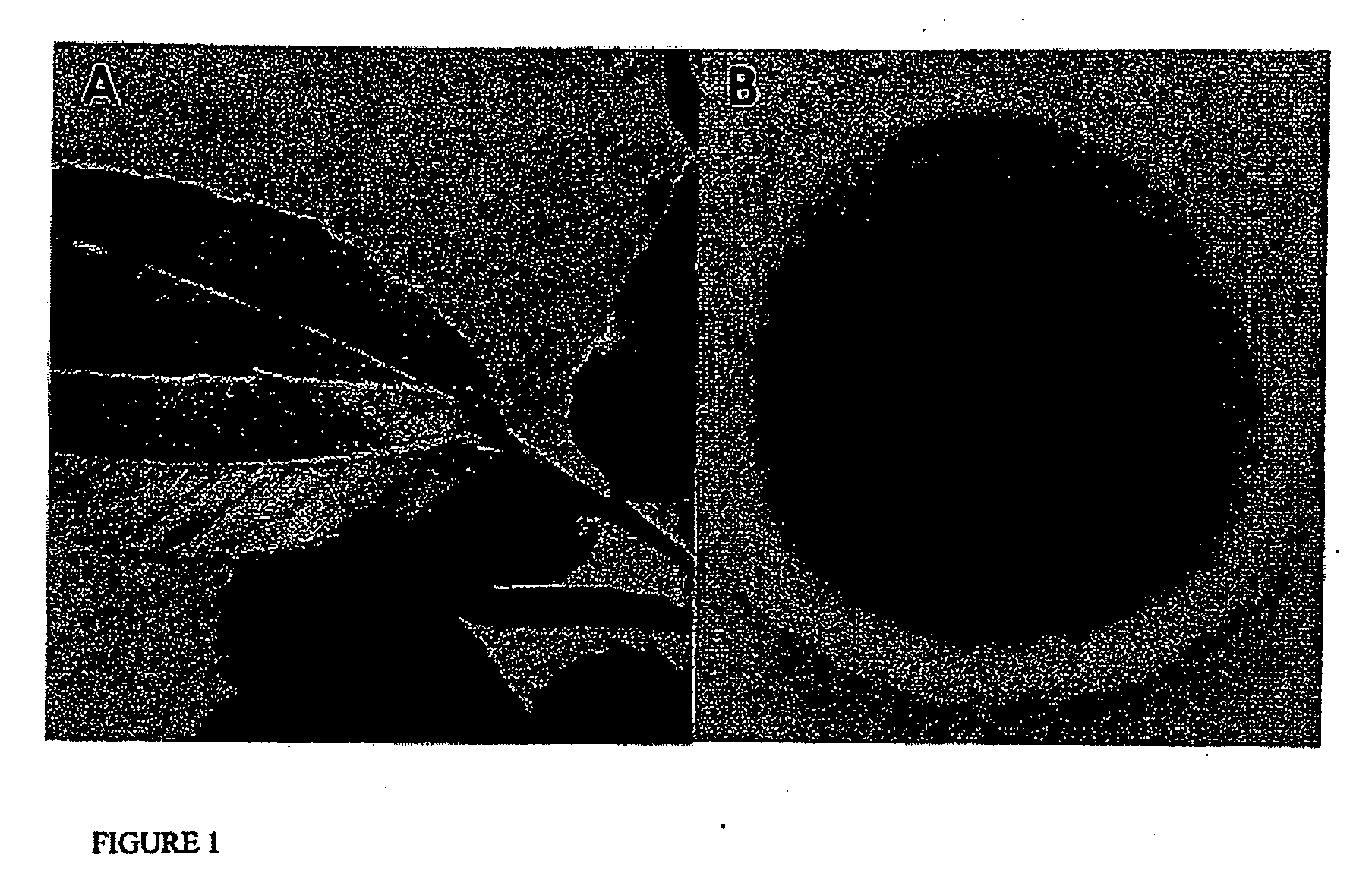Gliocladium isolate c-13 and methods of its use for producing volatile compounds and hydrocarbons
a technology of gliocladium isolate and volatile compound, which is applied in the field of endophytic fungi, can solve the problems of little practical value placed on them as potential biocontrol agents for use in agriculture, industry or medicine, and achieve the effect of increasing or decreasing the production of a compound
- Summary
- Abstract
- Description
- Claims
- Application Information
AI Technical Summary
Benefits of technology
Problems solved by technology
Method used
Image
Examples
example 1
Materials and Methods
[0135]This example provides the general materials and methods utilized in Examples 2-5.
Fungal Isolation and Storage.
[0136]Several small limbs of a mature Eucryphia cordifolia located obtained at 41° 32′ 52″ South and 72° 35′ 39″ West were removed and immediately transported by air for processing. In order to select fungi that may produce volatile antibiotics or other biologically active substances, a unique four quadrant Petri plate system was used. PDA was placed in all four quadrants and then Muscodor albus, an endophytic fungus known to produce volatile antibiotics, was placed in one quadrant and allowed to grow for 14 days (Worapong et al. Mycotaxon. 81: 463-475, 2001). Thus, the volatiles of M. albus were being used as a selection tool for other volatile antibiotic producing fungi. Small pieces of the inner bark and outer xylem tissues of E. cordifolia were pretreated with 70% ethanol, flamed and then cambium, phloem and outer xylem tissues were aseptically...
example 2
Identification of the Endophytic Fungal Isolate C-13
[0149]This example describes the identification of the endophytic fungal isolate C-13. A number of endophytic fungi were isolated from E. cordifolia, but the one of greatest interest was labeled “isolate C-13” (FIGS. 1A and 1B). This organism grew well on each medium that was tested. It produced a mycelium with concentric rings on CMA, while doing the same on NPDA and LB, but having pinkish and yellowish colorations, respectively on these media. On OMA, fungal growth was powdery, and variously colored. On PDA, however the mycelia developed a whitish powdery character. The mycelium gradually, within a week, became fluffy and began to display colors varying from powdery pink to purple to olive-toned. Blackish to purplish somewhat spherical-like bodies began to be deposited at the edge of the mycelium (FIG. 1B). The fungus produces eliposoidal, polysymmetical conidiospores ranging in size from ca. 1.8×5.0 μm on phialides ranging from ...
example 3
Biological Activity of Gliocladium sp. in Volatile Antibiotic Assays
[0151]This example illustrates the biological activity of Gliocladium sp. in volatile antibiotic assays.
[0152]In the initial standard bioassay tests, using the half plate method, among the test organisms representing a series of plant pathogens, P. ultimum and V dahaliae were strongly inhibited by the gases of Gliocladium sp. for this reason, the half plate bioassay system on 16 and 19 day old cultures of Gliocladium sp. were used. Further, organisms that gave the best responses to the volatile compounds in the air space above the agar were evaluated. A 40.9±6.6 percent reduction in growth of P. ultimum on PDA (relative to the control) was observed on a 16 day old culture of Gliocladium sp. after a 1 day exposure to the fungal VOCs. Then, after 5 and 7 days of incubation, there was 36±10.4% and 35.8±10.4% inhibition in the growth of P. ultimum, respectively. Comparable results were obtained when a 19 day old Gliocla...
PUM
| Property | Measurement | Unit |
|---|---|---|
| Volume | aaaaa | aaaaa |
| Volume | aaaaa | aaaaa |
| Strain point | aaaaa | aaaaa |
Abstract
Description
Claims
Application Information
 Login to View More
Login to View More - R&D
- Intellectual Property
- Life Sciences
- Materials
- Tech Scout
- Unparalleled Data Quality
- Higher Quality Content
- 60% Fewer Hallucinations
Browse by: Latest US Patents, China's latest patents, Technical Efficacy Thesaurus, Application Domain, Technology Topic, Popular Technical Reports.
© 2025 PatSnap. All rights reserved.Legal|Privacy policy|Modern Slavery Act Transparency Statement|Sitemap|About US| Contact US: help@patsnap.com



